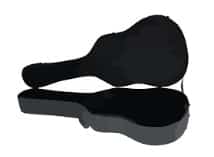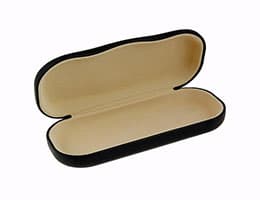 The Occitan estug derived, in our language , from case . This is the name given to the cover or case that is used to store and protect certain objects .
The Occitan estug derived, in our language , from case . This is the name given to the cover or case that is used to store and protect certain objects .
For example: “Please hand me the guitar case,” “I can't find my glasses case,” “For my birthday, my wife gave me a pen in a wooden case that has my initials engraved on it.”
The cases have different characteristics depending on the type of item they must store. Sometimes they are assimilated to boxes , while in other cases they are wrappers . The rigidity and size of the case are directly linked to what it stores.
There are cases made of plastic , wood , leather and cardboard , among other materials. Many cases have a closure ( zipper ) and others have buttons or similar mechanisms.
Not only is the structure of the case important to resist shocks or protect the product from the action of multiple external factors: its interior conditioning is also relevant. Depending on how the internal sector of the case is designed, what is stored will be immobilized and, in this way, protected against a fall or movement during transfers.
Generally, the internal conditioning of the case is intended to adapt to the object stored in it. This minimizes its impact against the walls or edges of the case. This conditioning also favors organization when the case serves to store more than one piece.
Pens or biromes; the pens (pens); the clocks ; the rings; musical instruments; spectacles (glasses); and knives are some of the items that are often stored and carried in cases.
The versatility of cases is not only manifested in the immense variety of them on the market, but also in the fact that many people can make their own using a large number of different materials . Needless to say, the easiest ones to make at home are the small ones, although the most skilled ones venture to create all kinds of models.
 As mentioned in previous paragraphs, one of the functions of the case is the protection of an object during transport, and to fulfill this it must have an external layer that is sufficiently rigid and resistant to the factors that it will encounter in normal situations. In the case of the glasses case, since it is usually carried in the bag along with many other things, it is usually made of plastic or another hard material, to avoid the glass breaking caused by a sharp object.
As mentioned in previous paragraphs, one of the functions of the case is the protection of an object during transport, and to fulfill this it must have an external layer that is sufficiently rigid and resistant to the factors that it will encounter in normal situations. In the case of the glasses case, since it is usually carried in the bag along with many other things, it is usually made of plastic or another hard material, to avoid the glass breaking caused by a sharp object.
However, there are also glasses cases made of fabric or flexible materials, and this responds to the fact that we do not always carry things in our bag that can damage the lenses, although they can also be used to store them in a pocket, where a rigid case would be more uncomfortable to wear.
The case of the guitar case is similar: in general, it is usually very rigid and resistant to shocks and falls, with a very hard outer layer and a very soft inner layer, so that the instrument is not scratched. On the other hand, there are also flexible cases, ideal for short, low-risk trips, or for not adding so much weight to the subject.
Nowadays, thanks to the popularity of 3D printers, many people venture to create their own hard cases, using design tools. One of the great advantages of creations of this type is that they can be shared very easily over the Internet, so that other users who are not so skilled in this field of computing can print and use them, or make as many modifications as they wish.
